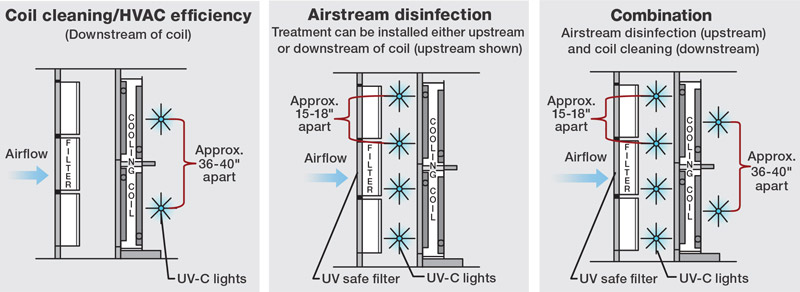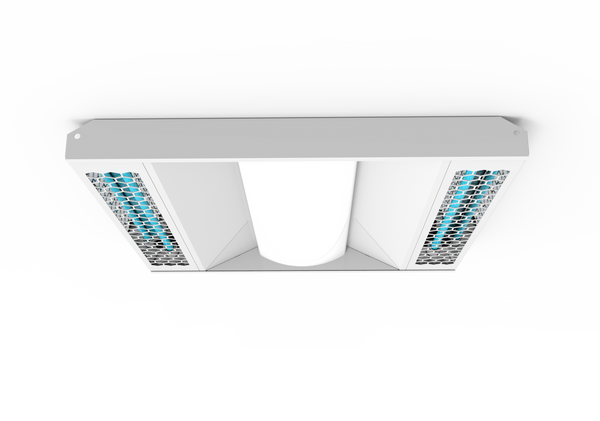Discover the Perks of UV Surface Disinfection: Reliable and Eco-Friendly Hygiene
Discover the Perks of UV Surface Disinfection: Reliable and Eco-Friendly Hygiene
Blog Article
UV Sanitation: The Cutting-Edge Modern Technology Changing Hygiene Practices
In the world of hygiene methods, one modern technology has actually arised as a game-changer: UV disinfection. From health care settings to food processing, UV sanitation is making its mark in various industries.
Just How UV Sanitation Functions
UV disinfection works by utilizing ultraviolet light to destroy or inactivate microorganisms, providing a chemical-free and highly reliable technique of cleanliness. This modern technology utilizes the power of short-wavelength UV-C light, which is capable of damaging the DNA and RNA of microorganisms, thus rendering them not able to replicate and cause damage.
The procedure begins with the installment of UV disinfection systems, which are composed of UV lights that discharge UV-C light. These lamps are purposefully placed in locations where microbial contamination is a problem, such as water therapy plants, health centers, labs, and food processing centers.
When microorganisms are subjected to UV-C light, the photons permeate their cell walls and get to the DNA and RNA within. The high-energy UV-C photons interrupt the genetic material by creating bonds in between surrounding nucleotides, leading to the formation of thymine dimers. These dimers stop the microbes from reproducing, providing them safe.
UV disinfection is highly reliable versus a wide range of bacteria, including bloodsuckers, bacteria, and viruses. It is especially efficient against waterborne microorganisms like E. coli, Giardia, and Cryptosporidium. UV sanitation is a chemical-free approach, eliminating the demand for possibly unsafe anti-bacterials and reducing the risk of unsafe disinfection spin-offs.
Advantages of UV Sanitation
UV disinfection offers numerous benefits in the area of sanitation, making it a very favored technique for effectively getting rid of damaging microorganisms. One of the essential benefits of UV sanitation is its capability to supply a chemical-free solution. Unlike typical disinfection methods that count on chemicals, UV disinfection uses ultraviolet light to damage the DNA of microbes, providing them not able to reproduce and create infections. This not just gets rid of the need for possibly damaging chemicals however additionally reduces the threat of chemical deposit on surfaces.

UV sanitation is also extremely versatile in its applications. It can be made use of in numerous setups, consisting of hospitals, schools, food processing facilities, and water treatment plants. UV disinfection systems can be quickly integrated into existing cleanliness techniques, giving an added layer of defense versus contagious diseases.
Along with its efficiency and flexibility, UV sanitation is likewise eco-friendly. It does not generate any kind of hazardous byproducts or residues, making it a safe and lasting technique for hygiene - uv surface disinfection. UV sanitation requires marginal maintenance and has a long life-span, resulting in expense financial savings in the long run.
UV Sanitation in Health Care Settings
In healthcare settings, UV disinfection has become a revolutionary technique for successfully getting rid of unsafe bacteria. The use of UV light to disinfect surfaces and devices has gained appeal as a result of its capability to provide an extra layer of protection against virus. UV disinfection works by giving off ultraviolet light at a details wavelength that is deadly to bacteria, infections, and various other bacteria. This technology uses several benefits in health care setups.
First of all, UV sanitation is a non-chemical technique, making it an eco-friendly find out this here choice contrasted to conventional sanitation approaches that frequently entail the use of extreme chemicals. Making use of UV light eliminates the need for chemical anti-bacterials, lowering the danger of harmful residue or chemical exposure to both people and health care workers.
Furthermore, UV sanitation is highly efficient in killing a large array of microorganisms, including drug-resistant germs such as MRSA and C. difficile. It supplies a constant and reliable disinfection process, guaranteeing that all surfaces and equipment are completely disinfected, also in hard-to-reach locations.

UV Disinfection in Food Processing
The application of UV sanitation prolongs past medical care settings and finds substantial worth in the world of food processing. uv surface disinfection. UV disinfection modern technology is coming to be significantly prominent in the food industry as a result of its ability to properly remove hazardous pathogens and improve food safety
Among the main advantages of UV disinfection in food handling is its ability to target a vast array of microorganisms, including mold and mildews, bacteria, and viruses. By making use of UV light at specific wavelengths, it is feasible to disrupt the DNA and RNA of these pathogens, rendering them not able to create or reproduce harm. This technology can be related to numerous stages of the food processing chain, including surface area sanitation, tools sanitation, and water therapy.
UV sanitation offers a chemical-free and non-thermal approach of disinfecting food. Unlike conventional disinfection techniques that rely upon chemicals or heat, UV technology does not leave any kind of deposit or modify the preference, appearance, or nutritional worth of the food. This makes it an excellent remedy for markets that require strict adherence to top quality criteria.
Moreover, UV disinfection systems are very easy to set up and operate, calling for very little maintenance. They can be incorporated into existing handling lines without causing substantial interruptions to the production procedure. In addition, UV systems Read More Here have a fast treatment time, permitting for constant processing and decreasing downtime.
The Future of UV Sanitation

One area where UV sanitation is anticipated to make considerable innovations remains in the field of medical care. With the increase of antibiotic-resistant germs and the demand for extra reliable disinfection techniques, UV light has the prospective to play a crucial function in reducing healthcare-associated infections. UV sanitation systems can be made use of to decontaminate surface areas, equipment, and even the air in health care facilities, helping to prevent the spread of harmful virus and improve person safety.
Another industry that could gain from developments in UV disinfection technology is the food industry. UV light has actually already verified to be an efficient technique for decontaminating food products and decreasing the risk of foodborne illnesses. As technology enhances, we can anticipate to see much more effective and affordable UV sanitation systems being implemented in food processing plants, making certain that the food we consume is secure and free from dangerous bacteria.
Verdict
To conclude, UV sanitation is a sophisticated innovation that is transforming cleanliness techniques in healthcare setups and food processing. By using UV light to eliminate or deactivate bacteria, it provides countless benefits such as effectiveness, safety, and performance. With continuous innovations in this area, UV disinfection holds terrific possible for the future of cleanliness, offering a sustainable and trustworthy option for preserving tidy and hygienic settings.
UV disinfection is a chemical-free method, removing the requirement for possibly dangerous disinfectants and decreasing the danger of harmful disinfection by-products.
Unlike standard sanitation methods that rely on chemicals, UV disinfection uses ultraviolet light to ruin the DNA of bacteria, providing them unable to reproduce and cause infections. Unlike typical disinfection methods that rely on chemicals or warm, UV technology does not leave any residue or alter the preference, appearance, or nutritional value of the food. As innovation boosts, we can expect to see much more cost-effective and efficient UV sanitation systems being implemented in food processing plants, guaranteeing that the food we take in is safe and totally free from damaging bacteria.
In final thought, UV sanitation is a sophisticated technology that is transforming hygiene techniques in health care setups and food processing.
Report this page